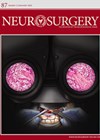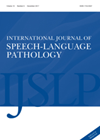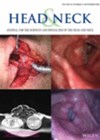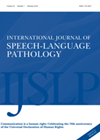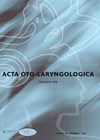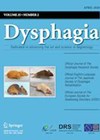
Journal Reviews
OSA is neuroprotective!
This interesting study supports the hypothesis of the protective effects of obstructive sleep apnoea (OSA) against ischemic events like stroke. The authors evaluated the impact of OSA with the presentation, hospital course and outcomes of patients with subarachnoid haemorrhage (SAH)....
Pain control for patients with chronic pain following surgery
There is an increasing number of patients with a background of chronic pain presenting to the otolaryngologist. Patients with chronic pain require extra consideration in postoperative pain control due to risk of tolerance and dependence. This article summarises postoperative management...
Bringing aged care back
Worldwide, our older population is increasing, and thus a need for the provision of care to older people is also increasing. Aged care may be informal, provided by unpaid carers; or formal, provided or subsidised by government or other organisations....
Swallowing it whole: the physical and psychological consequences of dysphagia
Living with dysphagia in the real world can be extremely challenging, both practically and psychologically. Long-term changes in taste due to chemo-radiation treatment for head and neck cancer, fatigue due to Parkinson’s disease, and physically impaired structures due to stroke...
CATE in people with dementia
Behavioural hearing tests may be difficult to perform for people with dementia. The aim of this study was to investigate if the cortical automatic threshold estimation (CATE) may be used as an alternative to the pure tone audiometry test. Six...
Pretend placements: simulation is as good as the real thing
Clinical placements are now, more than ever during the COVID-19 pandemic, a huge time and personnel commitment. Recently, allied health students have had huge changes to their placements, often undertaking them entirely remotely. This article describes a novel method of...
Predicting the need for salvage laryngectomy
The treatment of laryngeal cancer has seen a shift towards organ preservation strategies with non-surgical treatment offering equivalent survival outcomes. Nonetheless, salvage total laryngectomy (SLT) remains an important curative management option in cases of treatment failure or recurrence. The authors...
How long is too long? Waiting times for speech and language therapy
Waiting lists are a reality of clinical practice, and many health and social care professionals become used to having to cope with this. The authors of this paper addressed this issue by examining written submissions to the 2014 Senate Inquiry...
Remembering how to speak
Reminiscence therapy (RT) is an approach that provides people with dementia opportunities to recount nostalgic memories and access thoughts for communication. It is one of the most commonly used therapies in aged care settings. The aim of RT is to...
Does use of pectoralis muscle myocutaneous flap (PMMCF) reduce postoperative pharyngocutaneous fistula complication after salvage laryngectomy?
Salvage laryngectomy for recurrent laryngeal carcinoma following failed radiotherapy or chemoradiotherapy is associated with high postoperative complication rate. The primary aim of this paper was to assess whether use of muscle myocutaneous flap (PMMCF) as an interposition graft reduces the...
Telepractice for the delivery of paediatric feeding services
During the current COVID-19 pandemic, telepractice is being heralded as the safest service delivery mode for the majority of outpatient consultations. Patients are reviewed by their healthcare specialist through video consultations, thus avoiding the need for patients to leave their...
What do SLTs do in palliative care?
The authors of this article highlight that the number of older people has increased significantly in the last two decades, and the number of people over 85 has doubled in Australia since 1996. They attribute this to improved lifestyle factors...

